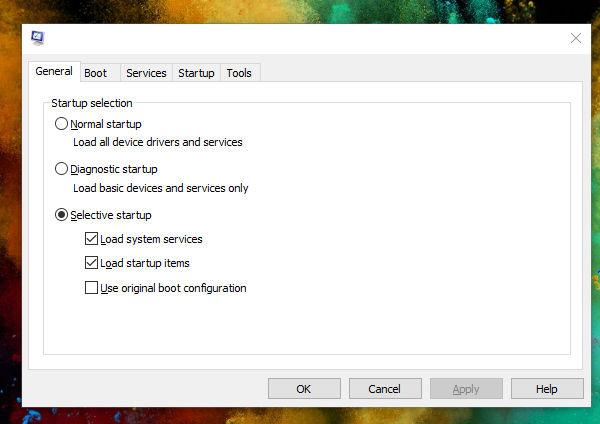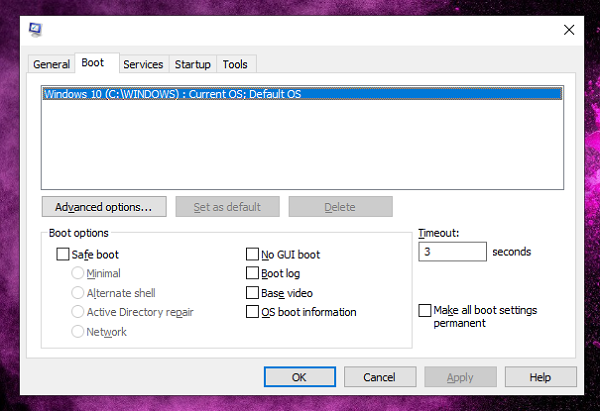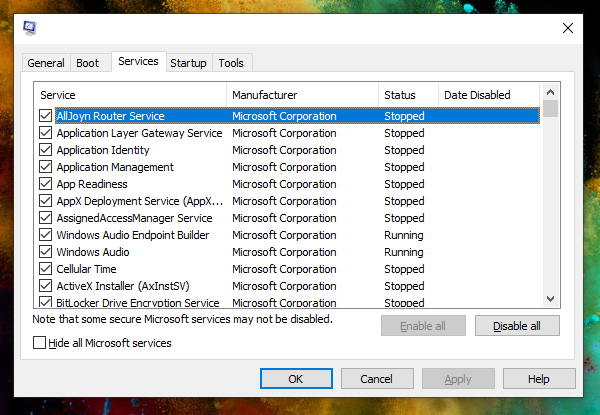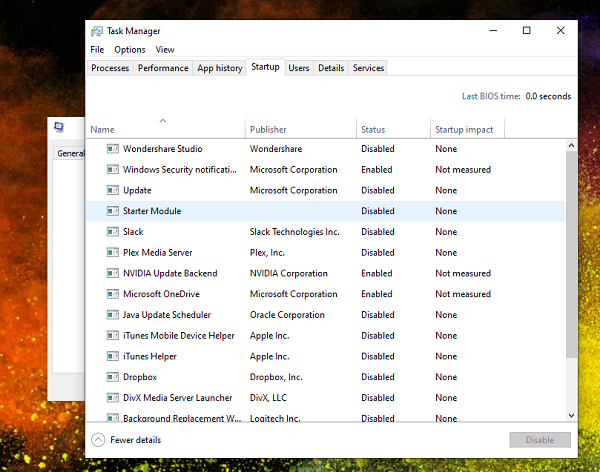When Windows boots up, a lot of things happen, including the loading of a lot of processes and applications. If any of these processes get stuck, Windows will either fail to load or load very slowly. That’s is where the Windows inbuilt tool MSConfig or System Configuration Utility comes into action. In this post, we will see how to open & use MSConfig in Windows 11/10 and how to manage startup items, boot options, Services & boot in Safe Mode, etc.

What is MSConfig in Windows 11/10
MSCONFIG, or the System Configuration utility, helps users troubleshoot Windows Startup issues. It allows you to manage startup selection, Safe Boot, enable or disable Windows Services, find and launch system tools like Performance Monitor, Resource Monitor, and more. The System Configuration utility is more of a diagnostic tool and offers some great controls for configuring your system’s startup.
How to open MSConfig utility
Open Run Prompt (Win+R), and type msconfig. and press the Enter key. It will launch the System Configuration utility. It will display five tabs:
- General: Allows you to boot Windows in diagnostic or selective mode when necessary
- Boot: Manage everything related to Windows boot, including Safe mode.
- Services: Enable or disable Windows and other services
- Startup: The startup section is now managed via Task Manager.
- Tools: Launch popular System services from here.
Let us take a look at the features in detail.
1] General/Startup Selection
There are three types of Startup selection. The first is the Normal boot where there is almost no restriction on what ads to the boot process. The second is Diagnostic, which is useful for troubleshooting with minimal service, while Selective is where you decide what starts with Windows 11/10.
- Normal—Boots the system without any diagnostic services. If you are trying to diagnose a problem, you should select one of the other two options. When you are sure the issue is resolved, click this setting to boot your system normally again.
- Diagnostic — This will make sure Windows boots with essential services and drivers enough to start the computer. It helps you to find out notorious third-party services and software causing the problem.
- Selective —Use this section to speed up computer startup. You can choose to disable services and programs which need not start with Windows.
The Selective Startup mode not only allows you to start your system with essential services and drivers (just like diagnostic) but also correctly configures the use of additional services and startup applications so you can slowly determine what is causing the problem in your boot process. You can go through and turn on items one at a time from the Service or Startup tabs and see how your system reacts when you reboot.
Read: How to remove disabled items from the MSConfig startup list.
2] Boot Options

The options for Safe Boot are:
- Safe Boot: Minimal: Boots to the Windows GUI but only running critical services. Networking functions are also disabled. If you find your system is working at this level, then you might want to try turning on services to see if they cause any further issues.
- Safe Boot: Alternate Shell: Use this option to boot to a command prompt. It will keep the critical services running, but networking and the GUI are disabled.
- Safe Boot: Active Directory Repair: Boots to the Windows GUI running critical services and Active Directory.
- Safe Boot Network: Use this option to boot to the Windows GUI, running critical services and networking. If you don’t think your problem is in the networking services, then having the network turned on for your system will help. It will allow you to access resources you might need on the network or the Internet for diagnosis.
The other options are:
- No GUI Boot: Does not display the Windows Vista splash screen when you are booting. Instead, as mentioned earlier, the Aurora screen appears.
- Boot Log.: Stores information from the boot process in a log located in %systemroot% called ntbtlog.txt. Other technicians can read these logs to find what might be causing your system to crash.
- Base Video: Just like VGA mode in times past, this mode loads the system with standard VGA drivers instead of those that specifically relate to your hardware. This option is suitable for eliminating problems with video drivers. When in this mode, Windows runs at 640 X 480 resolution at which it will consume less memory.
- OS Boot Information: Shows all the drivers during the boot process as they load up.
- Make All Boot Settings Permanent: Once you are done with the changes, and want to make it permanent, select this option. However, do remember that post this, there is no easy way to revert to the previous settings. You will have to change everything manually, and hence we caution to use this option carefully.
- Timeout Settings: You can configure different countdowns for your multi-boot systems. You can try to type in what you like, but it will ask for a number between 3 seconds and 999 seconds.
- Advanced Settings: These advanced options enable you to configure such things as the number of processors, the amount of memory, and Global Debug settings. Keep in mind that these options are last-resort choices to diagnose your systems. Use it under the direction of Microsoft support services.
Read: What are Boot Advanced Options in MSCONFIG?
3] Services

If you believe that any of the Windows Services is causing an issue, then this section lets you deselect, and help you figure. It lists all the services which start with the boot. You can also uncheck the checkbox to prevent that service from starting up the next time you boot the system.
When you choose to deselect services, the startup mode changes to Selective Startup. To ensure that you do not disable any of the Windows system services, check the box to select hide services in Windows.
Be careful when you decide to disable a service because you might cause other problems while attempting to search for the one causing your original problem. Some services are compulsory for your system to operate correctly. Other services, if disabled, may throw off your diagnostic approach because you may be affecting other aspects of your OS.
In other words, know why you are disabling a service before you do it, and understand how that service may impact other services or features of your system.
TIP: Autostart Explorer lets you explore EVEN the most obscure start up locations.
4] Startup

In Windows 10, the section to manage Startup items is now available with the Task Manager. You can choose to enable or disable applications to start with Windows. I use it to make certain applications that register themselves to start with Windows can be removed. It improved my overall boot timing.
5] Tools
The Tools tab provides a list of diagnostic and informational tools and shows their location. From within this tab, you can literally “Launch” any system tool, or you can note the location or name of the tool itself. What’s great about this is that it’s a central location to all sorts of tools and even a few preconfigured command-line options. E.g:
C:\WINDOWS\System32\cmd.exe /k %windir%\system32\ipconfig.exe
That said if you want to disable specific applications in the Startup menu, such as certain spyware and malware applications you find, then you should try the MSCONFIG Cleanup tool. It can also help you get rid of its entry from the Registry and remove these items.
Read next:
Leave a Reply